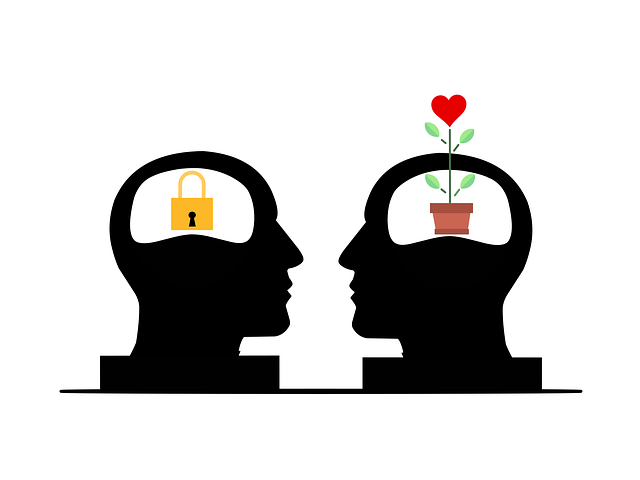Designing Mental Health Programs: Focus on Dissociative Disorders & Engagement
Understanding mental health disorders like Golden Dissociative Disorder (GDD) is vital for designing…….
In the intricate realm of mental health treatment, Golden Dissociative Disorder Therapy (GDDT) has emerged as a transformative approach, offering hope and healing to individuals grappling with complex dissociative disorders. This comprehensive therapy goes beyond traditional methods by integrating innovative techniques, cultural insights, and technological advancements to address the multifaceted nature of dissociation. The following article aims to provide an in-depth exploration of GDDT, its impact, and its role in shaping the future of mental healthcare.
Definition: Golden Dissociative Disorder Therapy is a specialized form of psychotherapy designed to help individuals experiencing dissociation—a psychological state characterized by a sense of detachment from one’s thoughts, memories, emotions, or even physical self. GDDT focuses on integrating fragmented aspects of the psyche, facilitating a deeper understanding of traumatic events, and promoting healthy coping mechanisms.
Core Components:
Trauma-Informed Approach: GDDT is grounded in trauma theory, recognizing that dissociation often arises as a coping mechanism to process severe trauma. Therapists create a safe space for clients to revisit traumatic memories while ensuring emotional support.
Dissociation Spectrum Assessment: This involves a thorough evaluation of the client’s dissociative symptoms, including identity fragmentation, depersonalization, and amnesia. It helps tailor treatment strategies to specific needs.
Integration Techniques: The heart of GDDT lies in various integration methods, such as eye movement desensitization and reprocessing (EMDR), cognitive behavior therapy (CBT), and mindfulness practices, which aid individuals in reconnecting with their past experiences and present reality.
Cultural Sensitivity: Recognizing the cultural roots of dissociation, GDDT incorporates culturally responsive practices to ensure effective treatment for diverse populations. This includes understanding the impact of cultural beliefs on identity formation and healing.
Historical Context: The roots of GDDT can be traced back to the late 20th century when researchers and clinicians began exploring dissociation as a unique psychiatric syndrome. Early pioneers, like Dr. Charles R. Figley, contributed significantly to its understanding, leading to the development of specialized treatment approaches. Over time, GDDT has evolved, drawing from various therapeutic modalities to become a comprehensive framework.
Golden Dissociative Disorder Therapy has garnered international recognition and adoption due to its demonstrated effectiveness in treating complex trauma-related disorders. Here’s an overview of its global impact:
| Region | Impact and Trends |
|---|---|
| North America | GDDT is widely practiced, with many leading mental health institutions offering specialized programs. Research funding has been significant, contributing to the development of evidence-based practices. |
| Europe | The European Union has shown a growing interest in GDDT, with countries like Germany and the UK implementing integrated care models, combining therapy with community support services. |
| Asia | In Asia, GDDT is gaining traction, especially in countries with a high prevalence of cultural trauma, such as Japan and South Korea. Cultural adaptations are being made to suit local contexts. |
| Middle East and Africa | While adoption is relatively newer, GDDT is slowly gaining acceptance, particularly in regions with limited access to traditional mental health services. Local therapists are adapting global practices to meet specific cultural needs. |
The economic implications of Golden Dissociative Disorder Therapy are profound, considering the significant resources required for specialized treatment and training.
Market Dynamics:
Service Provision: GDDT is typically offered in private clinics, hospitals, and dedicated mental health centers. The availability of such services varies across regions, influenced by healthcare infrastructure and insurance coverage.
Training and Certification: Therapists specializing in GDDT undergo extensive training, leading to increased demand for qualified professionals. This has resulted in the development of certification programs worldwide.
Economic Impact:
Technology plays a pivotal role in modernizing GDDT, enhancing its accessibility and effectiveness. Here are some notable advancements:
The development and implementation of GDDT are guided by various policies and regulations, ensuring ethical standards and quality care:
Despite its promise, GDDT faces several challenges and criticisms that require thoughtful consideration:
Strategies for Improvement:
The following case studies illustrate the practical application of Golden Dissociative Disorder Therapy and its transformative impact:
Case Study 1: Sarah’s Journey to Integration
Sarah, a 32-year-old woman, presented with severe dissociation, including frequent episodes of depersonalization and fragmented memories. Through GDDT, she engaged in EMDR therapy to process traumatic childhood events. Over several months, Sarah experienced significant improvements, regaining control over her identity and emotions. She learned grounding techniques to manage dissociation and joined a support group for additional peer connection.
Key Takeaways:
Case Study 2: Cultural Adaptation in Japan
A Japanese clinic implemented GDDT with cultural sensitivity, addressing the unique aspects of dissociation within their context. The therapy team adapted techniques, incorporating elements of traditional Japanese healing practices and mindfulness meditation. This approach successfully treated a group of young adults experiencing dissociation related to historical trauma.
Lessons Learned:
The future of Golden Dissociative Disorder Therapy holds immense potential, shaped by emerging trends and strategic considerations:
Golden Dissociative Disorder Therapy represents a significant advancement in the field of mental healthcare, offering hope and healing to those struggling with dissociation. Its global impact, technological enhancements, and cultural adaptability demonstrate its potential to transform lives. As research continues to provide insights, GDDT will evolve, ensuring that individuals receive the specialized care they deserve. By addressing the challenges and embracing emerging trends, the therapy’s future looks promising, promising a brighter path for those navigating the complexities of dissociation.
Q: What types of professionals can provide Golden Dissociative Disorder Therapy?
A: GDDT is typically provided by trained mental health professionals, including psychologists, psychiatrists, and licensed therapists who have specialized in this approach.
Q: How long does GDDT treatment usually last?
A: Treatment duration varies depending on the severity of symptoms and individual needs. It can range from several months to a year or more for comprehensive integration.
Q: Is GDDT covered by insurance?
A: Insurance coverage differs globally. Many regions have policies that include specialized mental health treatments, but it’s essential to check with your provider or local healthcare regulations.
Q: Can GDDT help individuals with complex trauma histories?
A: Absolutely. GDDT is particularly effective for individuals with complex trauma, helping them process and integrate traumatic memories while developing healthy coping strategies.
Q: What if cultural beliefs conflict with GDDT practices?
A: Cultural sensitivity is a cornerstone of GDDT. Therapists adapt practices to respect cultural contexts while ensuring the core principles of therapy remain intact.

Understanding mental health disorders like Golden Dissociative Disorder (GDD) is vital for designing…….

Social Skills Training (SST) and Golden Dissociative Disorder Therapy (GDDT) are targeted therapeuti…….